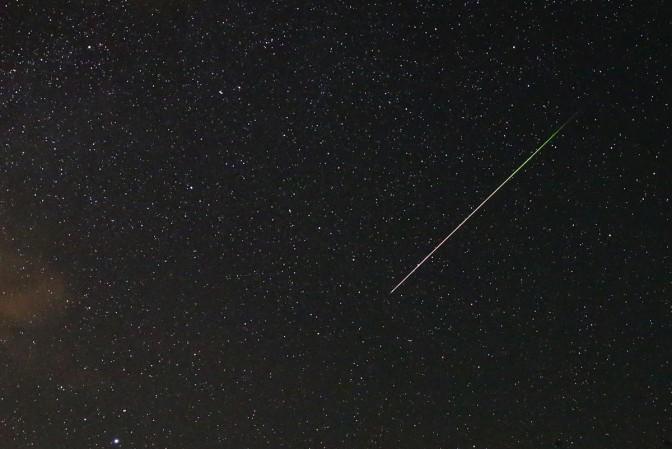
Last weekend, Germany got to witness the brilliant sight of a meteor bursting into a green fireball as it entered the earth's atmosphere. A photographer has managed to beautifully capture the amazing moment when the green streak was spotted close to the crescent moon and Venus. The rare celestial trio was captured in one frame on the night of June 16.
The photographer, Uwe Reichert set up his camera on the outskirts of Heidelberg in southwest Germany to capture the conjunction of Venus and the then three-day-old moon. Little did he know that a meteor entering the Earth's atmosphere would give him the rare opportunity of capturing a brilliant sight.
Initially, a white light flashed in the sky around Venus which soon changed to a neon green streak as the meteor sped down towards earth at a high speed, the European Space Agency (ESA) reported.
The ESA shared the image with an apt caption: "Sometimes, nature is the best art director!"
"By cosmic chance, in the same instant that he pressed the button of the camera's remote control, Reichert saw something bright falling from the sky. First, a white light flashed up above Venus, moved downward with high speed, changing colour into an intense greenish glare, and what once appeared as one object disintegrated to a spray of smaller sparkles keeping the original trajectory until dying out just over the horizon," the ESA explained.
Reichert has seen countless meteors and bright fireballs, but the recent meteor looked more like an exploding firework than a shooting star.
"But both the speed of the object and the very narrow angle under which the sparkles fanned out were arguments against artificial fireworks or other pyrotechnics," the ESA explained.
"When he checked the display of his camera, he was even more surprised: The object had crossed the camera's field of view leaving a bright streak on the image. The streak appeared to have pierced the clouds as an object would have done when falling from high altitude down to Earth," the agency stated.
"Clearly, this object had really been falling down, but taking perspective into account the whole trajectory must have been above the clouds. Therefore, the flight path must have been much farther away than it appeared," the agency added.
Check out the rare celestial moment below:
With 10 days until #AsteroidDay2018, the @esaoperations #IOTW shows the then three-day-old Moon and Venus in the evening sky... and, by cosmic chance, the streak of a meteor entering Earth's atmosphere! Captured by @UReichert on 16 June.
— ESA (@esa) June 20, 2018
Details: https://t.co/8OKJqvuXDO pic.twitter.com/e27ocahjkz

















